Here’s a story about a canvas that was lost. It has a happy ending, as is most often the way with these things. But, at one point in time, this canvas disappeared – in some senses, it ceased to exist.
Created in 1962, Le Jour is a painting by Lucio Fontana. Well, it’s less of a painting and more of a perforation piece. The making of it took place in Knokke, in Belgium, in the house of art collector Louis Bogaerts. But, perhaps most importantly of all, the creation was documented on film, proving to the art world that this piece really did exist.
For 30 years, the Tornabuoni Art gallery searched high and low for the piece, which is one of the largest gold paintings ever produced by Fontana. Now, the gallery can revel in being able to showcase its find, celebrating the historical importance of a work of universal recognition.
Lucio Fontana, Le Jour, 1962, oil and perforations on canvas, 211 x 140 cm, Courtesy Tornabuoni Art
Who is Lucio Fontana?
Born in 1899 in Argentina, Fontana flitted between his home country and Milan, Italy, where his parents were from. Later on, when nearing his 30s, he decided to settle in Europe – an artist’s paradise at that particular moment in time.
After his move, he began working as a sculptor, creating ceramic and terracotta pieces, most notably in abstract and figurative form. During this time, he was approached by numerous institutions and groups and asked to present his work in exhibitions and solo shows.
Later, he fled war-torn Europe for his home country, where he again took part in a variety of high-end exhibitions, shows, and fairs. Whilst settled in Argentina, he also started a private school for Arts (the Altamira Academy), which became a major player in the promotion of culture throughout the country. At a similar time, Fontana coined the term Spatialism and introduced it to the art world as a movement he had helped to invent.
Image courtesy of Tas Filip
When the war was over, Fontana moved back to Milan, creating a number of mini-manifestos with a group of notorious artists at the time. Towards the end of the 40s, he ventured deeper into his ideas of spatial art and began punching holes into the surface of monochrome paintings in an attempt to impart three-dimensional concepts onto two-dimensional pieces.
For such a simple idea, it generated a huge amount of interest, in part because of the amount of in-depth research that went with it. Fontana reached his art-world peak at the close of the 1950s with the release of his most famous pieces, Concetto Spaziale, Attesa. International notoriety followed, including exhibitions at MoMA and First Prize for Painting at the Venice Biennale. Somewhere in between his success, he produced Le Jour, a painting that, at the time, wasn’t notable as such, but would go on to become a hidden phenomenon waiting to be found.
Fontana died in 1968 in the midst of his success, spurring on numerous retrospective exhibitions in world-renowned institutions like the Centre Pompidou in Paris and the Guggenheim in New York. Even today, Fontana remains one of the most sought-after artists in the world, with his works hanging on walls in the MoMA and the Tate, to name a but a few.
Lucio Fontana, Concetto Spaziale, attese, 1968, 53,5 x 64,5 cm, water-based paint on canvas
Lucio Fontana, Concetto spaziale, 1953, oil and glass on canvas, 60 x 70 cm, Courtesy Tornabuoni Art
What is Tornabuoni Art?
Representing well-known Italian artists from the latter half of the 20th Century has elevated Tornabuoni Art to an expert in the field. It is dedicated to the oeuvre of Lucio Fontana and continues to promote his work through every exhibition and show. The gallery works in partnership with Tornabuoni Arte in Florence, the first of many spaces opened by Roberto Casamonti in the early 80s. Today, the Tornabuoni has exhibition spaces in Milan, Portofino, Forte dei Marmi and, its latest venture in Paris, which opened in 2009.
More about the exhibition
The Lucio Fontana, rediscovery of a masterpiece exhibition is open from 26th April to June 21st 2014, so there’s still time to get there! You can also see the film documenting Le Jour’s creation at the Musee d’Art Moderne.

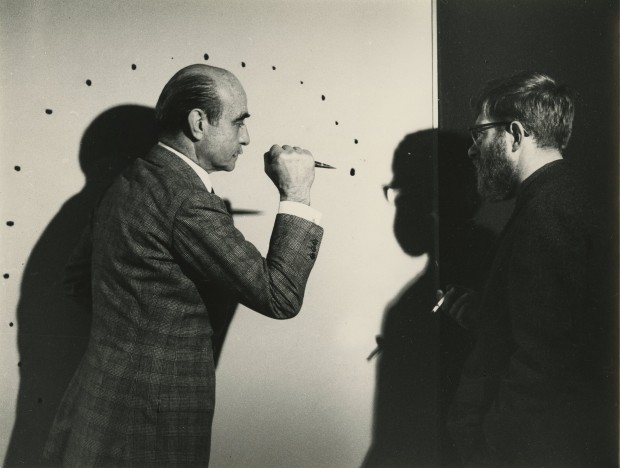
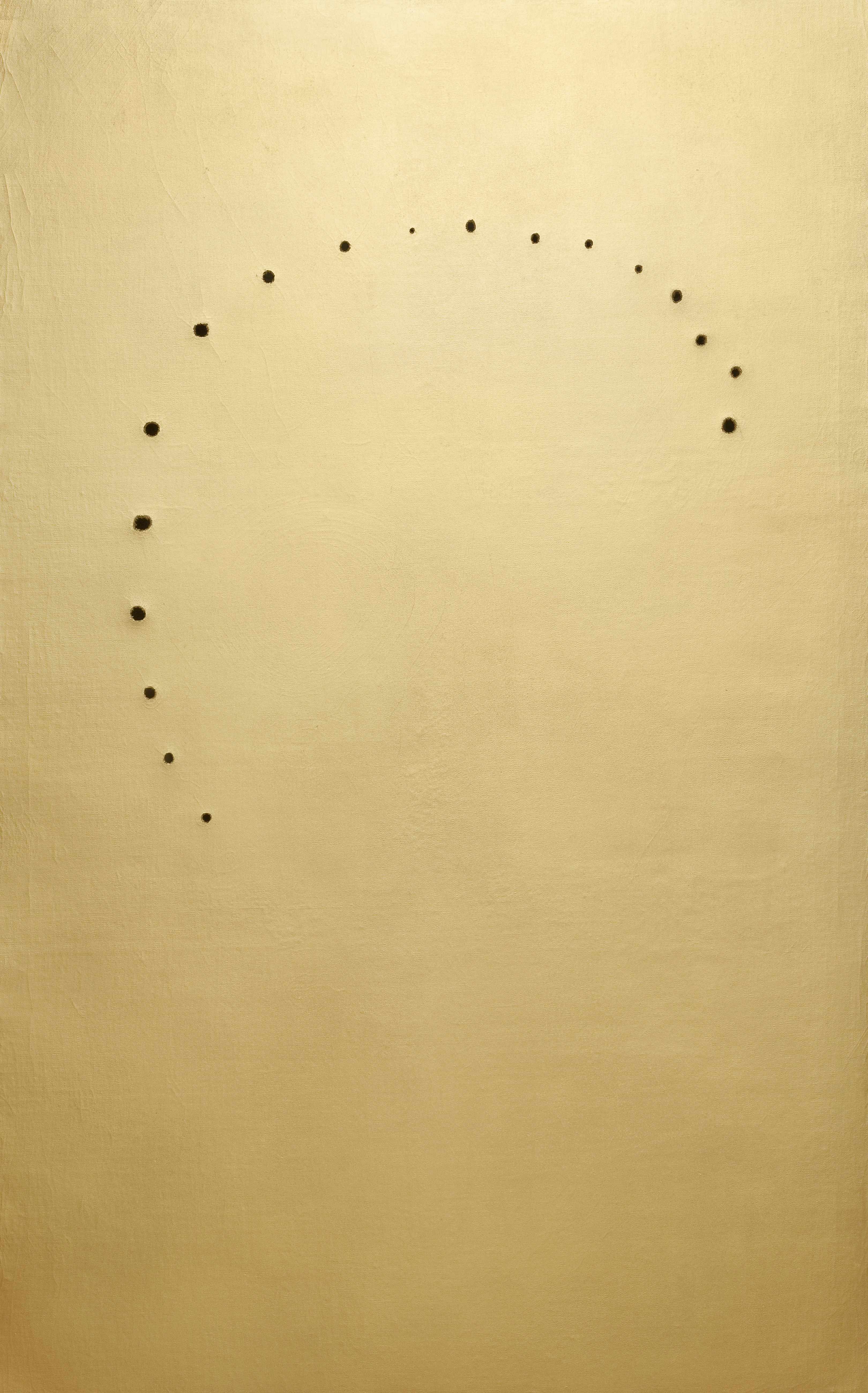
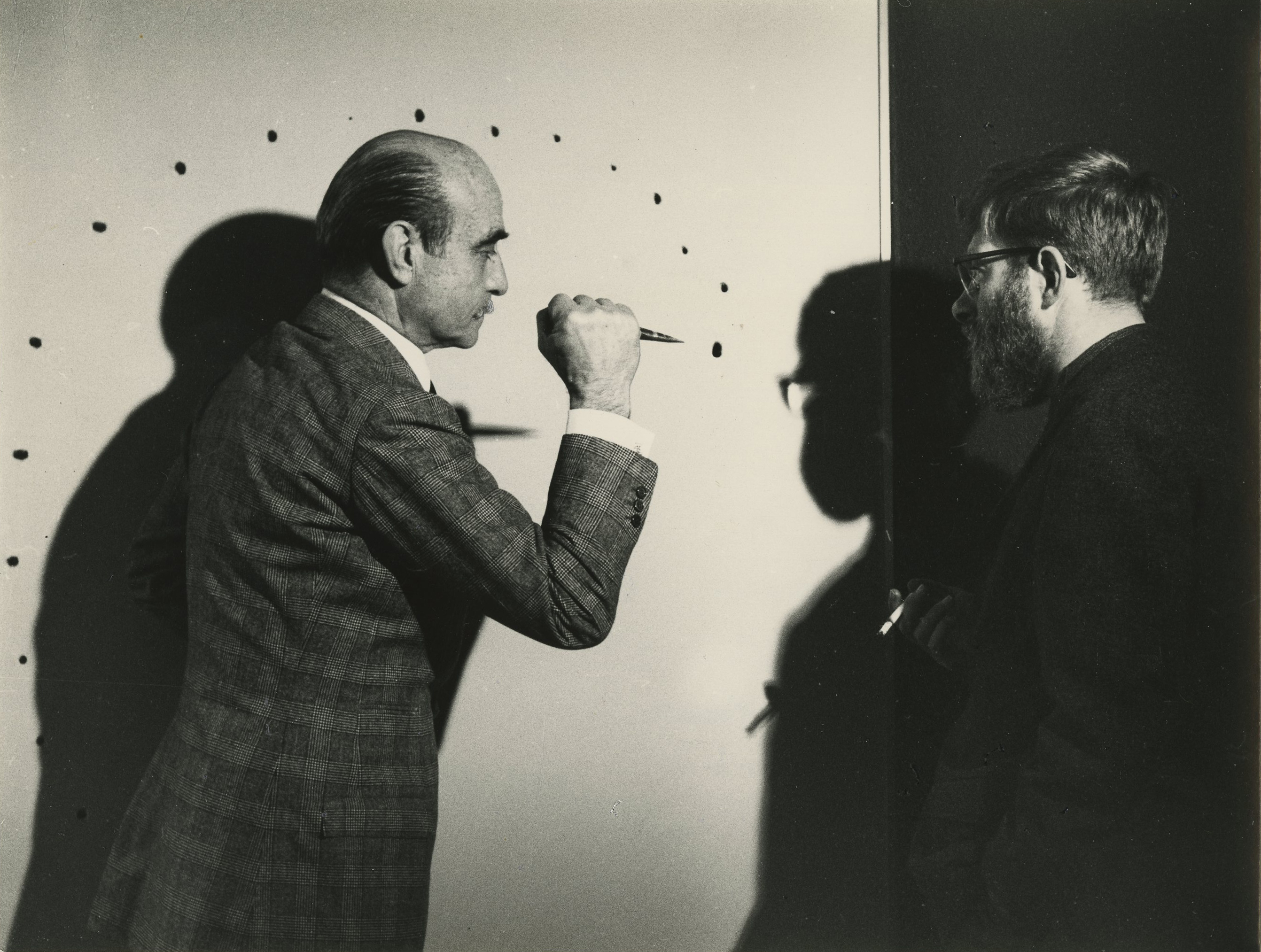
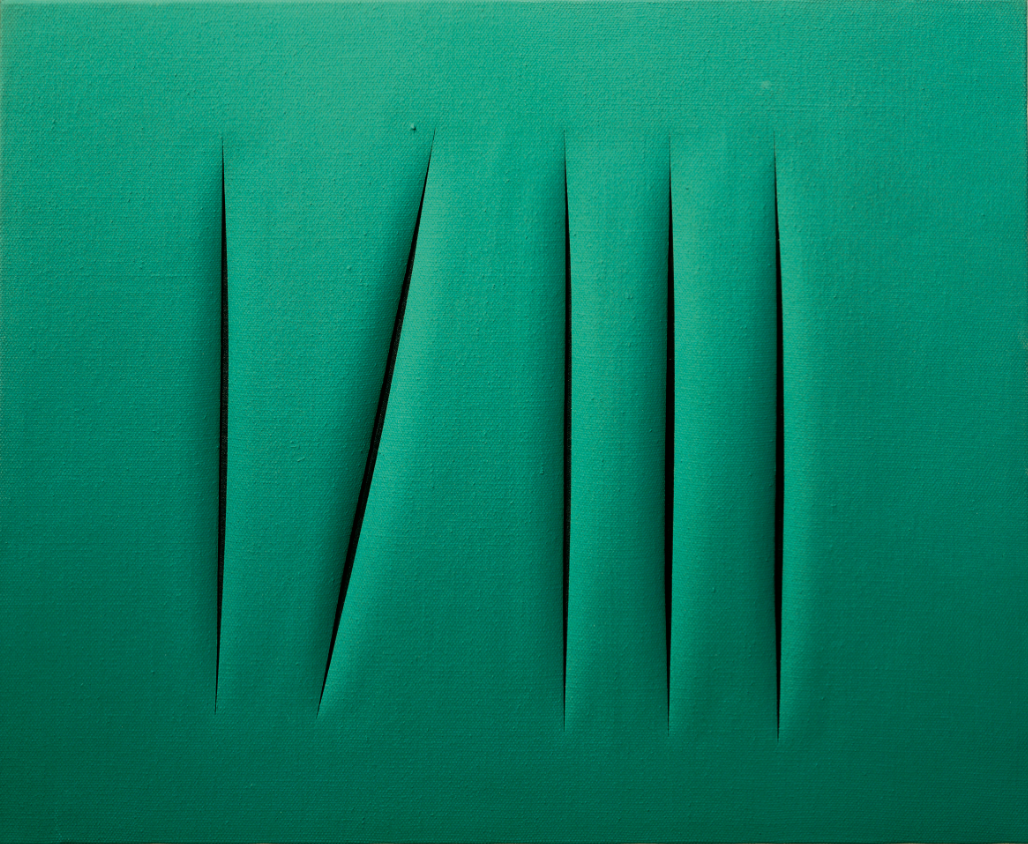
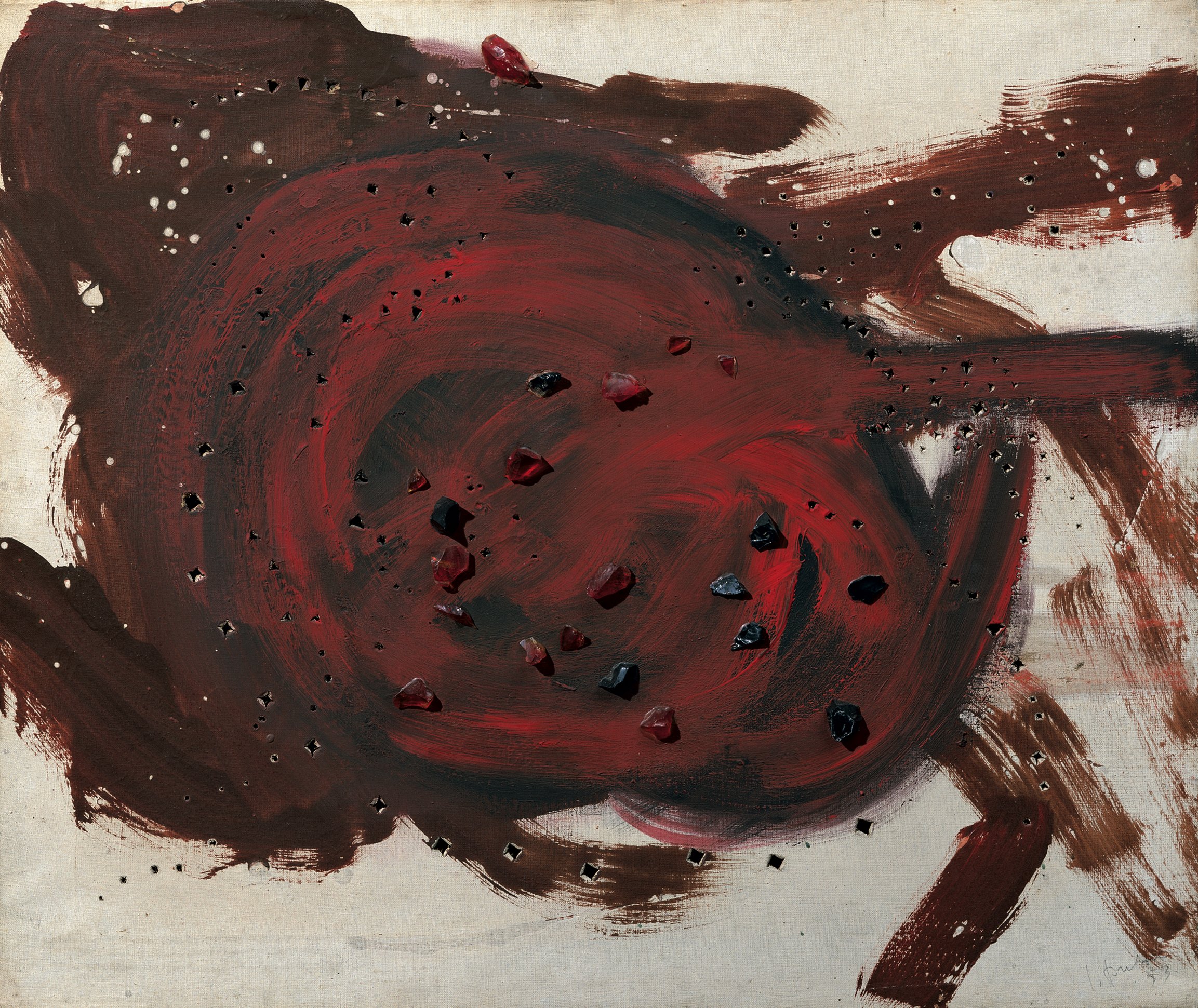


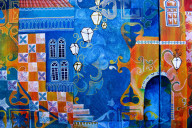
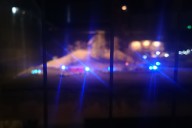
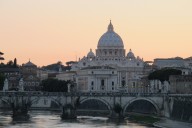





“Le jour”, now shown in Amsterdam on the ZERO- exhibition , was painted by Jef Verheyen (the man on the right side) and perforated by Lucio Fontana, who came to Belgium for this special occasion in 1962.